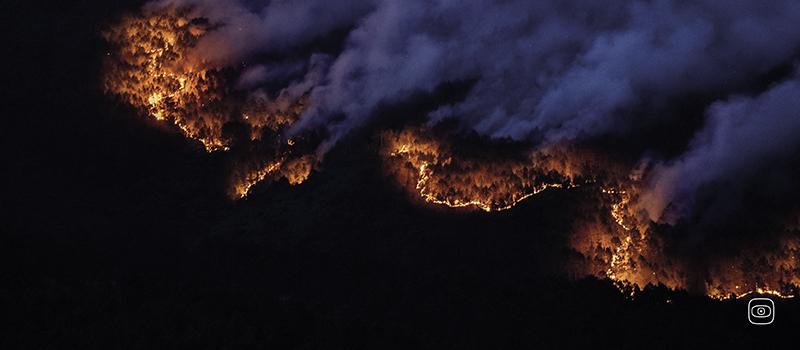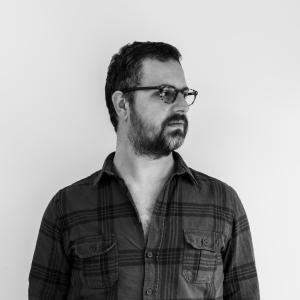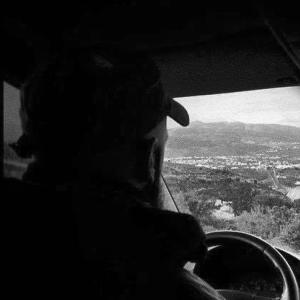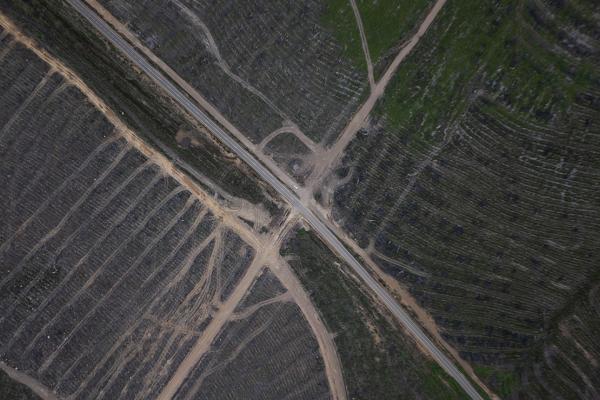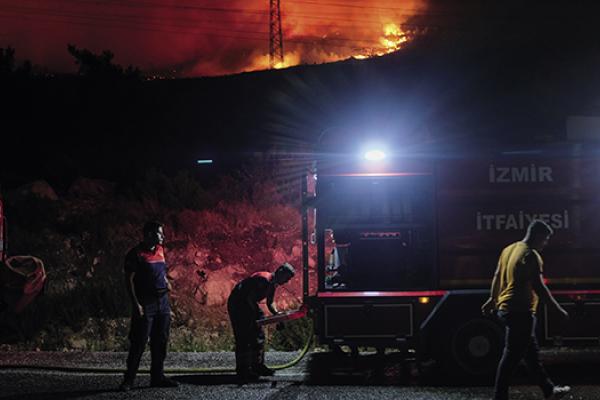Fierce and wildly erratic mega fires have become a staple chapter in southern European summers. While they cause losses of life, raze thousands of hectares of land, force evacuations and the closures of businesses, the public discourse invariably turns to the point of ignition with arson, machinery accidents, and lightning being the usual culprits.
The first in-depth investigation, ‘Fuelling A Mega Fire’, comprehensively breaks down the three structural causes of mega fires beyond their trigger: forest continuity, shrub density, and the convergence of unstable climate conditions.
But what sparks a mega fire is not what determines its behaviour, size, or its speed. Nor is it what holds the solution to preventing future catastrophic wildfires.
Beyond its trigger, three critical variables fuel a mega fire: forest continuity, sewn together shrub density, and the convergence of unstable weather and climate conditions.
These catalysts mean the difference between a fire burning out, and one capable of generating enough momentum to surge across the line of control and into unknown territory. Because in order to make sense of current and future fire regimes we must first understand what is fanning the flames.
The second long-form feature, ‘The Open Wounds of Pedrógão Grande’, analyses the devastating and generational impact of unstoppable wildfires through the testimonies of six people who survived Portugal's Pedrógão Grande mega fire of 2017.The lasting and unforeseen consequences of this fire which was one of the deadliest in European history are shown through the experience of six survivors and people who lost loved ones.
The third report, ‘Living with Fire’ explores the solution projects currently mitigating mega fires across the Iberian Peninsula. These fire smart initiatives cover the use of prescribed fire, extensive livestock grazing, agroforestry land mosaics, and the extraction of trees and shrub litter for biomass energy production.
Photo credit: Mikel Konate. "The fire that ignited on May 17 in Las Hurdes (Cáceres, Spain) advancing two days later through the Árrago Valley towards the towns of Descargamaría and Cadalso. About 700 people had to be evacuated. It is estimated the fire affected an area close to 10,000 hectares."
Dissemination & Promotion:
The team have presented the project in-depth at the events in A Coruña (1, 2) and Madrid. It has also been shared at other events in Barcelona, Valencia and Aveiro, reaching a large audience. Presentations of the project will continue in 2024 at future events. The story has also been promoted in several radio interviews.
